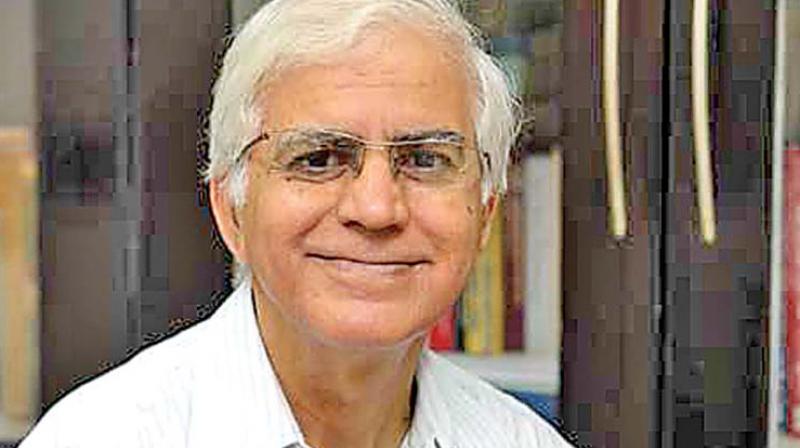Ranking system becoming robust, says NBA chairman
He discussed various issues, including the credibility of India Rankings and on whether the rankings helped institutions improve their quality.

Chennai: After bringing out two successive national rankings, National Board of Accreditation (NBA) chairperson and National Institutional Ranking Framework core committee member Professor Surendra Prasad said India is moving towards having a robust ranking system for higher education institutions.
In an exclusive interview with the Deccan Chronicle a day after releasing the national rankings, he discussed various issues, including the credibility of India Rankings and on whether the rankings helped institutions improve their quality.
Q What are the improvements compared to last year in India Rankings 2017?
The parameters used for India Rankings 2017 are broadly similar to those used last year. However, at the level of detail, some of the sub-parameters have been tweaked for a more robust system of rankings. For example, the quality of research publications has been enhanced to include the number of highly cited papers.
Q NIRF 2017 is reportedly having 800 fewer participants and some of the prominent institutions too are absent. How do you propose to ensure holistic participation of institutions?
The difference is closer to 500 than 800. There are many who could have also got a reasonably good rank but failed to participate. I think as they see the results, they will feel encouraged to do so in future years. I can only attribute initial inertia for not coming forward so far.
Many more high-quality institutions participated this year. The pleasant surprise is still 3,000 institutions have participated in the rankings. Clearly, there is a lot of aspiration here, which we need to encourage and empower in the future.
Q Have you noticed any improvement in terms of quality after introduction of NIRF in Indian Institutions?
Ranking can only do so much. Quality is a multi-dimensional framework and its assessment would require a different kind of effort. However, in as far as quality pointers are concerned, which is what ranking can at best do, there are improvements. We shall share these in the NIRF report when it is released later.
Q What are the reasons for some of the state universities to figure in Top 20 ranks this year faring better than central universities?
Every university is different, and many central universities are of recent vintage. It is heartening indeed, to see the State Universities in the list since many of these are indeed doing very well.
Q Private universities also featured among the top 20 institutions. How you ensure the credibility of the data given by the educational institutions?
It is very difficult to cross verify every data point across so many applicants, we do seek extensive clarifications whenever needed. It is also true that many private universities deserve the rank they obtained.
This is also a very welcome development, since this indicates a quiet renaissance in the higher education sector, even if it is limited to a few universities.
Q Is there any move to make it mandatory for all institutions to submit their details for the national rankings?
No.
Q Without attaching rank for the grant of monetary benefits how do you ensure relevance of these rankings?
It is certainly making the institutions to introspect. I am sure the MHRD will have some plans.
Q How can the ranking framework be improved in future?
There is always scope for improvement. Every year there are new lessons which need to be understood and taken into account.
I have no doubt we are moving towards a robust ranking system for higher education institutions.

